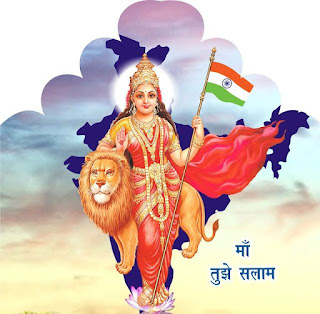Kolkata: In Search of A Creative City
I have written about Kolkata at regular intervals (see here). I can't claim to be objective and analytical about the city, but from the experience of Kolkata, as well as of elsewhere, I know Kolkata has a future. One factor is its teeming multitude, the source of much of its woes, which can transform into a great source of strength. The other factor is the transformation of the global economy, which will open up new opportunities by breaking down the old economic structures, and Kolkata may be the right place at this right time. While Dubai or Singapore may seek to import a labour force to maintain its creative economies, Kolkata may have an indigenous source, and therefore, can complete to be Asia's Creative Capital. That would need imagination, and courage, but Kolkata has it all.
However, to discuss this, one must start with the obvious negative. The common claim is that Kolkata is a dying city - a label first slapped on the city by late Rajiv Gandhi - and the Indian media, which can not agree on almost anything, has accepted this rather gladly. When talking about Kolkata, one just thinks about decline, a poor, sad, gloomy place. And, this is a global impression. The recent BBC documentary, Kolkata With Sue Perkins (see review here), capture this stereotype rather well. The City's dire, unyielding poverty was portrayed in rich detail, with a sort of mocking kindness that is both infuriating and melancholic at same time. Where the stereotype creeps in, though, is the projection of the City's future in a few rich men trying out their racing cars and building their real estate empires. Mother Teresa, as always, becomes Kolkatas most famous citizen, solidifying the image of Kolkata as a city of slums, and just that. What remains unsaid is that this city took on millions of refugees fleeing the civil war in East Pakistan in 1971, particularly relevant when the extraordinary scenes of migrants walking through Europe is all over the news. What is missed is that Kolkata remains pivotal to India's commodity economy, producing, as commodity economies do, a few rich men and widespread deprivation for everyone else.
But, then, things are changing. Though the BBC documentary may claim that Kolkata is one of the fastest growing metropolis in the world, it is also perhaps the only one large city in the world which has seen a marginal population decline over the last decade. In this day and age, that would be a sure sign of a city dying, but Kolkata is far too large and diverse to die in such a straightforward way. The decline, statistically speaking, is more about what we define as a City rather than absolute flight of population, Kolkata is perhaps fast transforming into a Megapolis with large hinterlands as the road and rail transport improves, and perhaps a stable and gradually prospering neighbourhood is stemming the flow of migrants to the city.
This is a good thing, I shall claim. Kolkata's strengths, its good schools and culture of education, lower prices, supply of drinkable water, young population, public transport, culture and culture industries, not to mention its strategic geographical location connecting India to Far East, are almost always undersold. Despite a populist government being at the helm, the state remains, in relative terms, less corrupt compared to its more economically dynamic peers. Its key problem, political dominance and retrograde decision making by an entrenched class of commodity traders and real estate owners, may become less vicious as the global commodity prices go through a correction and Indian real estate markets face a cyclical shake-up. In fact, this may create that crucial opening for the transformation from a city of commodities to a city of creativity, the one Kolkata desperately needs to leap forward into the league of cities.
One may say this is utopian, and Kolkata does not have an ecosystem of creativity. But, Kolkata has people, both well-educated young ones coming out of school and a large, successful, nostalgic diaspora to draw from. It offers a lifestyle, relatively safer, cheaper and culturally fulfilling than many other Indian cities. And, finally, it has money - we may have seen flight of capital in the recent past, but that may be more due to the perception issues that I highlighted above.
It is time, perhaps, to have a 'Coalition for Kolkata', a platform of a kind that brings entrepreneurs, educators, diaspora members from India and abroad, together, in conversation to renew the creative city that lies at Kolkatas heart. Its entrepreneurial ecosystem is already getting some attention, though the tone so far is one that of exception rather than a way of life. In a way, it is for those in Kolkata and attached to it to start believing in their city - that it is perfectly in alignment with what a global city in the 21st Century should be - and then project that confidence elsewhere.






Comments